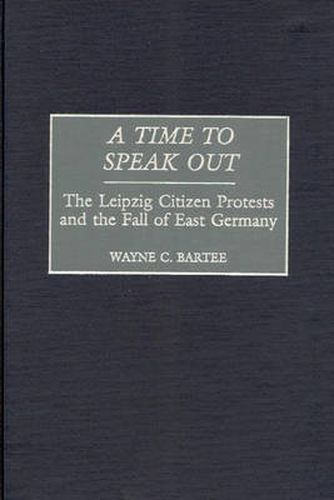Readings Newsletter
Become a Readings Member to make your shopping experience even easier.
Sign in or sign up for free!
You’re not far away from qualifying for FREE standard shipping within Australia
You’ve qualified for FREE standard shipping within Australia
The cart is loading…






Among the surprising events in Eastern Europe in 1989, none astonished the world more than the nonviolent overthrow of the East German Communist regime. This book examines the collapse of East Germany as it unfolded in one city, Leipzig. Analyzing the leading role of the GDR’s second largest city, Bartee combines chronological and descriptive narration of events with an in-depth critique of leading actors and groups. Prominent among these are the Protestant churches and the array of opposition groups concerned for peace, freedom, human rights, justice, and the environment.
Bartee focuses in particular on the famous peace prayer services in St. Nicholas Church and the protest activities of the groups as they expanded into the mass demonstrations of late 1989. Using surveys and interviews with participants, as well as Leipzig archives, this study examines the motivations and methods of the demonstrators. Bartee concludes that, while the prayer services provided hope, inspiration, and information, the strong desire for a free, open society served as the group’s chief motivation.
$9.00 standard shipping within Australia
FREE standard shipping within Australia for orders over $100.00
Express & International shipping calculated at checkout
Among the surprising events in Eastern Europe in 1989, none astonished the world more than the nonviolent overthrow of the East German Communist regime. This book examines the collapse of East Germany as it unfolded in one city, Leipzig. Analyzing the leading role of the GDR’s second largest city, Bartee combines chronological and descriptive narration of events with an in-depth critique of leading actors and groups. Prominent among these are the Protestant churches and the array of opposition groups concerned for peace, freedom, human rights, justice, and the environment.
Bartee focuses in particular on the famous peace prayer services in St. Nicholas Church and the protest activities of the groups as they expanded into the mass demonstrations of late 1989. Using surveys and interviews with participants, as well as Leipzig archives, this study examines the motivations and methods of the demonstrators. Bartee concludes that, while the prayer services provided hope, inspiration, and information, the strong desire for a free, open society served as the group’s chief motivation.